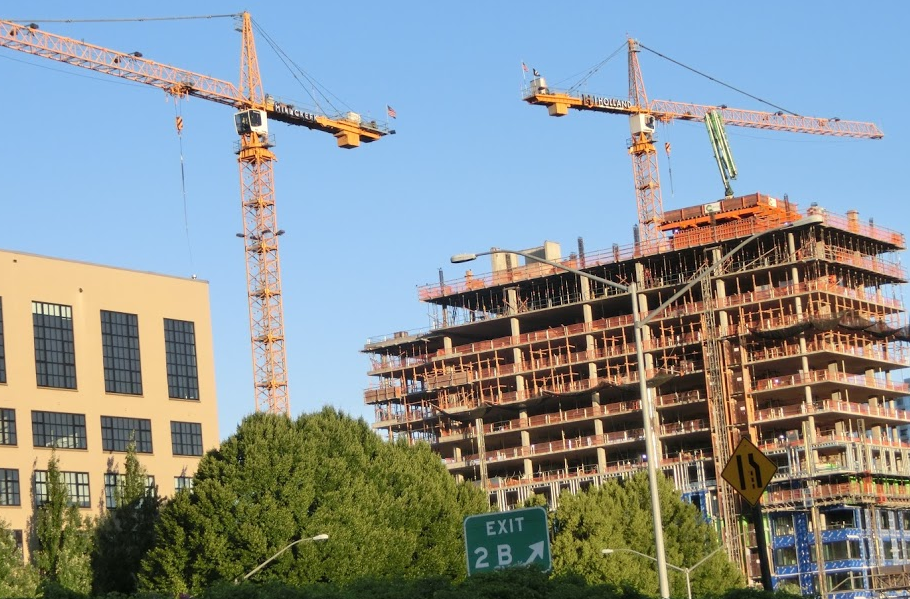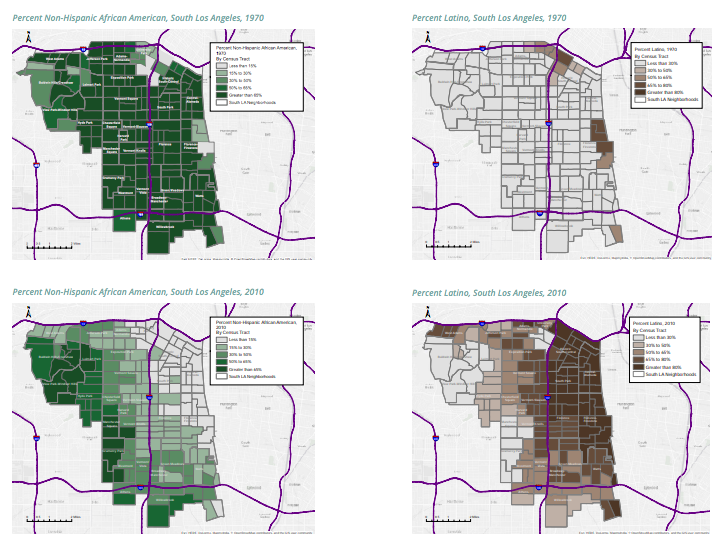What City Observatory did this week
1. If you want less displacement, build more housing. A common refrain at planning commission meetings around the country is that cities ought to block new housing as a way of insulating neighborhoods from change and displacement. The irony of this position is that making it harder to build new housing in the face of increased demand for urban living means that rents are bound to go up, and displacement is actually likely to accelerate. While giving low income neighborhoods the same kind of NIMBY powers that have enabled higher income neighborhoods the ability to block new housing seems like a viscerally satisfying equity move, in reality its counterproductive.
2. Does having wealthier neighbors make low income people unhappy? There’s a burgeoning field in economics called happiness research, which looks at the statistical correlations between self-reported life satisfaction and a wide range of personal, social and economic characteristics. A new study looks specifically at the connection between one’s neighborhood income and happiness. It finds that people who’s neighbors have higher incomes are on average happier. This effect is largest for low income households: the level of neighborhood income has about half as much power in explaining their happiness as does their own level of income. It’s a strong indicator that mixed income neighborhoods improve well-being–especially for low income households.
3. About that Federal Reserve study on housing supply and affordability. A few weeks back, there was considerable media attention to a study from two economists that suggested that in some instances, building more housing didn’t seem to have much effect on lowering rents. But a closer look at the study shows that its findings have at best, limited policy relevance. The study looks only at a small increase in housing in higher income neighborhoods, and critically, assumes that any increase in housing supply is exactly offset by an increase in population. This assumption in effect precludes finding any positive effect from growing housing faster than population–which is the most important channel by which supply reduces rents. We summarize our analysis, as well as comments from Brookings economist Jenny Schuetz.
Must read
1. Why do we continued to be surprised when neighborhoods gentrify? Our good friend Daniel Kay Hertz has a commentary at Belt Magazine on the surprising persistence of common gentrification narratives. Sure, those young people are moving to sketchy urban neighborhoods today, but as they age, they’re going to move to the suburbs like everyone else. In a preview of his forthcoming book “The Battle for Lincoln Park,” Hertz shows that exactly that same story was told in the 1970s. While gentrification often is portrayed as a recent and perhaps temporary phenomenon, it’s actual a perennial aspect of the dynamic urban landscape.
2. More evidence of rent declines. ApartmentList tracks apartment rents in cities around the nation and reports year-over-year rent declines in 23 of the nation’s top 100 markets. They estimate Portland rents are down 2.6 percent in the last twelve months, in line with estimates from other sources, including Zillow. The key reason for the decline: a surge in new apartment completions in the past year.
3. Is Scootergeddon overblown? NYC’s BikeSnob travels to Portland to fact check all the hype about e-scooters, and . . . is not displeased. There’ve’ been wild tales of how e-scooters from companies like Bird, Lime and Skip have instantly become menace to travel and public health, and a scourge of the public realm. Eben Weiss, aka NYC’s acerbic BikeSnob, traveled to Portland, which has had e-scooters for a little over a month now. His first hand reporting found none of the much-repeated tales of mayhem. The biggest problem was finding a fully charged scooter late in the day. His verdict:
. . . having now experienced shared electric scooters I can’t imagine not being thrilled by the potential inherent in a swift, cheap, and efficient form of transport that’s compatible with any wardrobe. They seem about as controversial to me now as escalators.
New Knowledge
Brown and Black. Neighborhood change in south Los Angeles. The USC Dornsife Center has a fascinating and comprehensive look at the last several decades of demographic change in south Los Angeles. The study, entitled “Roots|Raíces: Latino Engagement, Place Identities, and Shared Futures in South Los Angeles” looks at the steady transition of these neighborhoods from primarily African-American to increasingly Latino. The shift is vividly illustrated in this series of maps; the top row shows 1970; the bottom, 2010; green tracts are predominantly African-American; brown tracts are predominantly Latino.
In addition to a solid statistical analysis, there’s great qualitative insight on the way in which the neighborhoods have addressed cultural conflicts and constructed new neighborhood identities, that, for the most part, embrace the area’s diversity.
In the News
Writing in Planetizen, Todd Litman takes a look at the literature on housing filtering; how, as housing ages, it tends to depreciate in value and be occupied by successively lower income households, and cites our recent analysis of the role of new housing in reducing displacement.
City Observatory director Joe Cortright is quoted in Willamette Week’s story, “Portland is in the midst of a hotel-building spree. Can visitors keep up?” It’s all about supply and demand; as the article relates “hotels are subject to the same market forces that caused Oregon cannabis prices to plummet and Portland apartment developers to offer two months’ free rent to prospective tenants.”




